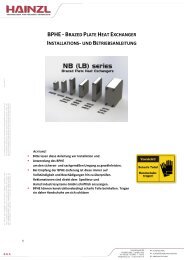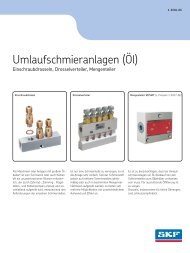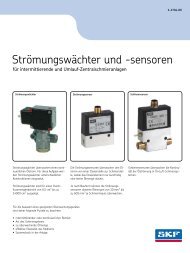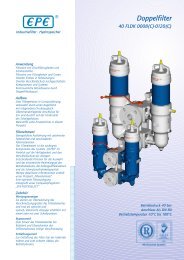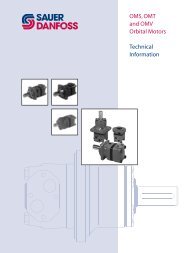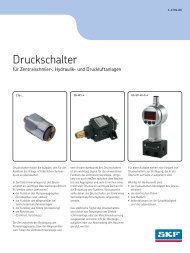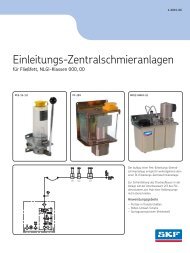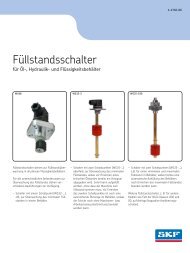Catalogue
Catalogue
Catalogue
Create successful ePaper yourself
Turn your PDF publications into a flip-book with our unique Google optimized e-Paper software.
POCLAIN HYDRAULICS<br />
VB Brake Valves<br />
Circuits<br />
Checking Connections<br />
Piping and Connections<br />
The different components of the hydraulic circuit (tank, pumps, distributors, filters, sinks, etc.) are connected<br />
together by rigid piping or flexible hoses.<br />
Emergency /<br />
Parking brake<br />
Suggested connection:<br />
Screwed Connections<br />
Full power<br />
brake<br />
Service<br />
brake<br />
Comply with the connection directions given by the manufacturers for each part: function and marking of the<br />
ports, types of connections, diameters, types of lines (flexible or rigid), etc.<br />
Rigid Tubes<br />
For high-pressure pipes, only use unwelded cold-drawn steel pipes.<br />
Take the following precautions for making up the tubes:<br />
• After cutting to length, cold bending and crimping, the tubes must be carefully deburred, rinsed with oil<br />
and blown before connection.<br />
• After welding or bending, the tubes must be etched (solution based on sulfuric acid) then rinsed with oil<br />
and neutralized (solution based on sodium hydroxide).<br />
• The connections, threaded plugs, etc. must be deburred and cleaned before assembly.<br />
• If assembly is not done immediately, seal the ports with plugs.<br />
Service brake<br />
+ inching<br />
Steering assist<br />
brake<br />
Flexible Tubes<br />
Only use flexible tubes with crimped ends.<br />
Avoid contacts likely to break down the flexible tubes.<br />
As needed protect them with armor.<br />
Accumulator<br />
charging<br />
Avoid kinks.<br />
Observe the minimum radius of curvature.<br />
The tube's interior diameter must be greater than or equal to<br />
the diameter of the connection openings of the components.<br />
Connection<br />
Options<br />
Check the compatibility of the<br />
types of connections between<br />
the tubes and the motor’s ports.<br />
If they are not compatible, use<br />
adapter fittings.<br />
Ensure that the class of fitting is<br />
suitable for the operating<br />
pressure.<br />
Installation<br />
25/09/2009 75



